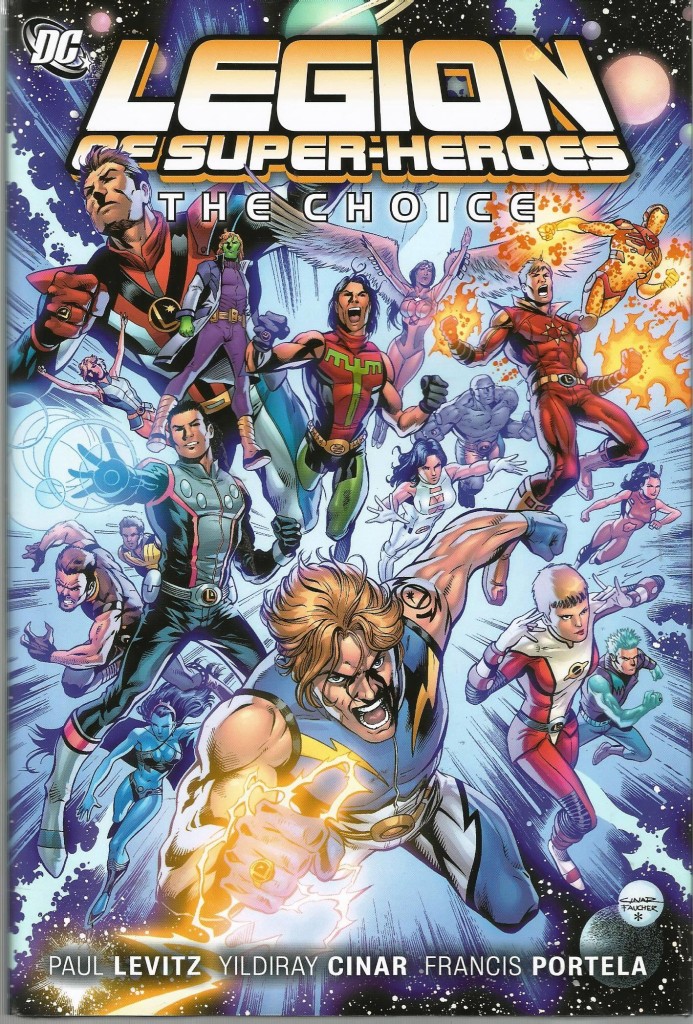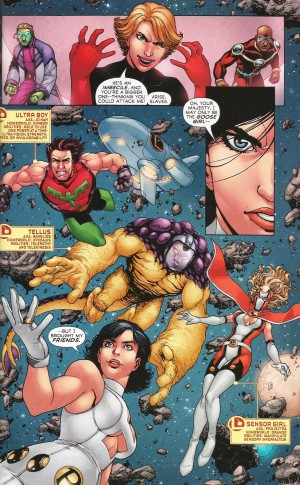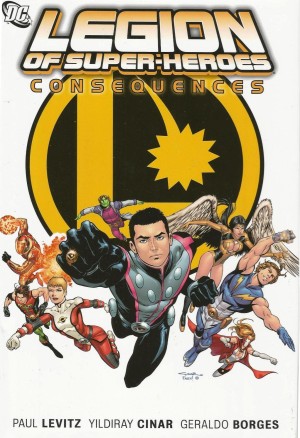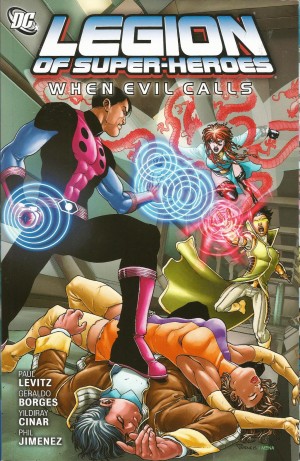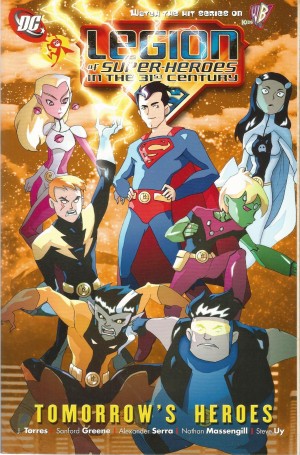Review by Will Morgan
Spoilers in review
There was jubilation among Legion of Super-Heroes fans when Paul Levitz, the writer who made the team one of DC’s best sellers in the 1980s and 1990s, was announced as returning to script the exploits of the 30th century interplanetary adventurers. This followed Superman and the Legion of Super-Heroes, by Geoff Johns and Gary Frank, a surprise hit when serialised in 2007. It generated enough interest in the Legion to warrant a complete overhaul of the failing franchise, particularly since, after several ‘reboots’, the Johns-scripted serial was a revisitation of the ‘Classic’ Legion, with older versions of the much-loved original characters.
The joy of Levitz’s appointment didn’t last long, as he brought a pallid imitation of his former style, over-written and focussing on the duller characters among the feature’s huge cast, while the accompanying relaunch of the Adventure Comics monthly presented a series of ‘continuity implants’ – untold stories from the team’s early days – which were sloppy and occasionally offensive.
The main plot here takes Earth-Man, the racist, alien-hating mass-murdering villain of Superman and the Legion of Super-Heroes, and places him into the custody, and into the roster, of the Legion by edict of the United Planets Council. Their purpose is to show the recently-fragmented United Planets worlds that human/alien cooperation is possible. Now, ignoring the fact that the Legion itself, with members from myriad worlds including Earth, had demonstrated that example for at least a decade even by comic-book time, how is this remotely justifiable? Also, why are the Legion tolerating someone who came close to wiping them out being forced into their ranks?
Ostensibly, it’s so the Legion won’t be ejected from their Terran HQ, but – so what? They have the resources to set up anywhere else in the galaxy, and long-term Legion fans (reviewer raises hand, in full disclosure) know so well they have too much integrity to accept such an unethical burden. Arcs of redemption are all very well – a favourite of writers and consumers alike – but this is so far-fetched as to snap the reader’s credence. It displays a fundamental misunderstanding of the Legion one would not expect from Levitz, who accomplished so much with them in the past.
Not only is Earth-Man the latest Legionnaire, but he is also, bafflingly, offered another heroic legacy, as from the ruins of Oa, Dyogene, a creature resembling a flying green zygote, arises to offer him founding membership in the new Green Lantern Corps! This was presumably an attempt to increase readership by bodging DC references into the Legion relaunch, despite the fact that historically the Legion has always been strongest when isolated from the rest of the DC universe.
More stupidities include the forced integration of Gates, a popular character from a completely different version of the Legion, into this line-up and the introduction of the apparently ageless Harmonia Li, a character intended to be mysterious but mostly just irritating. Worst, though, is a plot moving beyond dumb into offensive with the beginning of a relationship between Shadow Lass, alien from the planet Talok VII, and the alien-hating Earth-Man.
The new artist, Yildiray Cinar, provides gorgeous, action-packed visuals with an admirable clear style. He’s a real discovery, but the attractiveness of the pages is marred by the multiple and major narrative misfires.
Character sketches and tryout pages by Cinar, and cover variant drawings by Jim Lee, fill out the book. The story continues in Consequences.
